Despite a rather underwhelming performance, Spain have secured a spot in the semi-finals of EURO 2020 after beating Switzerland on penalties. It was not exactly a dominant display but some heroics from LaLiga star Unai Simón and Barcelona’s Pedri and Sergio Busquets managed to save the day.
This tactical analysis will give you both teams’ tactics and tell you just how Spain salvaged a victory.
Lineups
As ever, we’ll start the analysis by dissecting the starting formations. Switzerland didn’t tinker too much with the squad that eliminated France but Denis Zakaria had an almost impossible task of replacing the team captain, Granit Xhaka. Even though his display was decent overall, he scored an own goal that put Switzerland in an early deficit.
Apart from that, Vladimir Petković decided not to fix a system that was clearly not broken and retained the 4-2-3-1 formation that sometimes resembled a 4-4-2, just like it did against France.
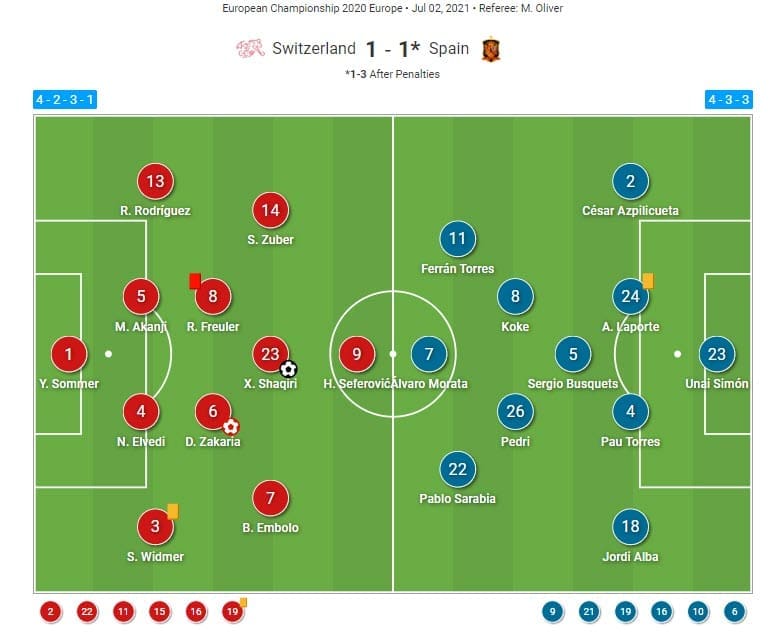
Luis Enrique, on the other hand, came into the game with two changes to the lineup that beat Croatia. Pau Torres returned and displaced Eric García, while Jordi Alba took the left-back spot from José Luis Gayà once more. Spain remained in their traditional 4-3-3 structure throughout the game.
Spain’s rotations
Even though they struggled immensely as the game went on, Spain were very comfortable in possession for the large part of the first half of the match. This was to be expected and Switzerland’s initial and very narrow 4-4-2 formation out of possession insinuated they were prepared to sit deep and wait for their chances through transitions.
The block had some variations and they would swap to a 4-2-3-1 as well but the key aspects remained very similar. Their main idea was to close down the channels leading to Spain’s main creative and progression outlets in Busquets and Pedri. Liverpool‘s Xherdan Shaqiri and Haris Seferović would take turns keeping the former in their cover shadow while Zakaria would mark Pedri tightly.
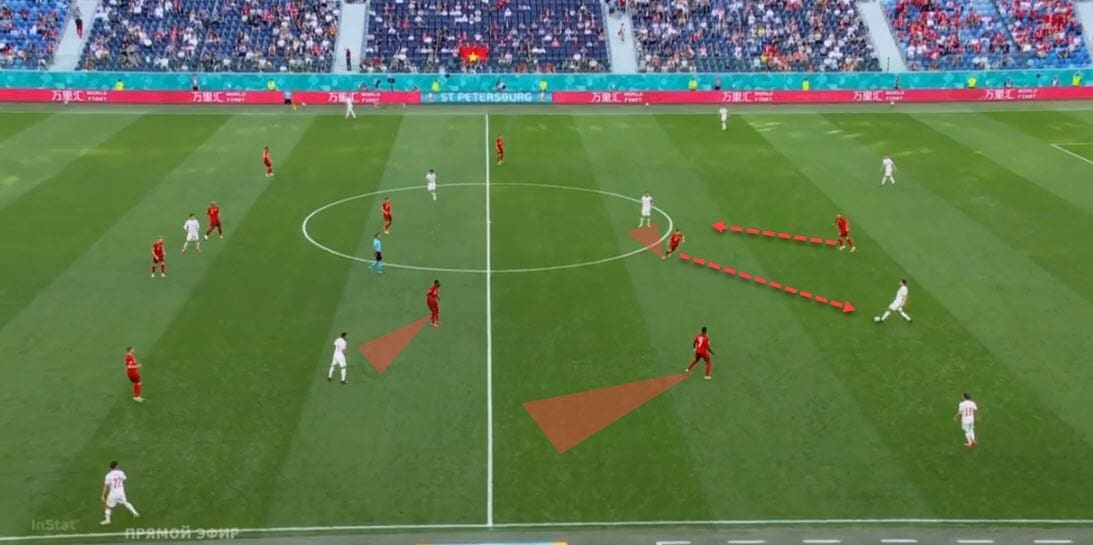
Note in the image above how Shaqiri and Seferović swap places as one drops down to cover Busquets and the other pushes higher up to put pressure on the ball-carrier. At the same time, Zakaria is on Pedri and Breel Embolo closes down the channel towards the wide area. However, despite a good initial setup and compactness, the heavy man-marking nature of the structure meant it was easily manipulated by Spain’s positional rotations.
Enrique’s men used several different principles to play through the block and generally had little to no trouble progressing into the final third in the first half of the game. This analysis will now review some of those tactics. The first example focuses on a very standard rotation they do.
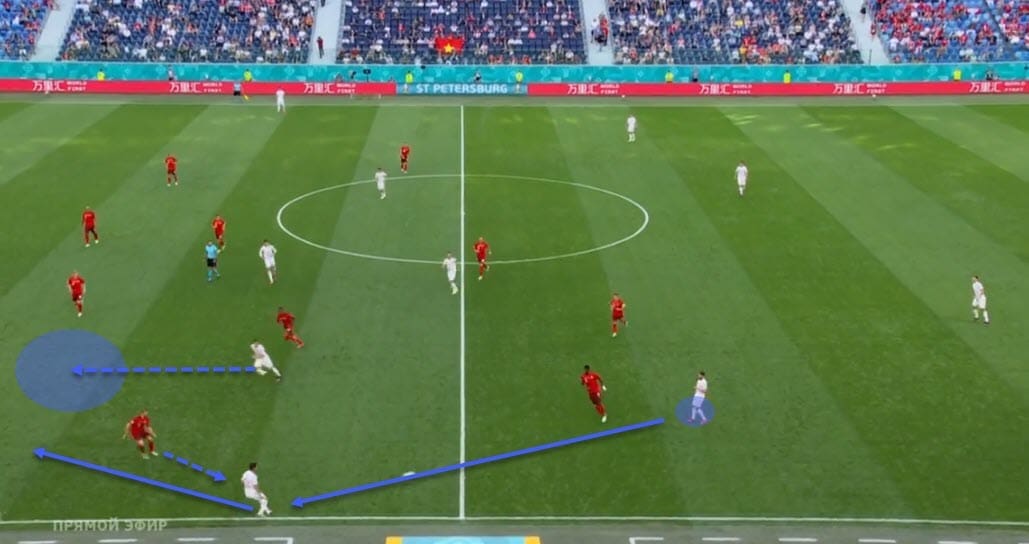
Spain keep the full-backs deep both to prevent counters but also to assist the first phase of build-up. This meant their backline was mostly flat in possession but it also attracted the second line of Switzerland’s defensive block. At the same time, the wingers would drop slightly deeper and hug the touchline to receive a pass and stretch the opposition backline.
That, in turn, drags the marker away and creates space for the ‘8’ to run through the half-space channels into the final third. We’ve seen them deploy these tactics multiple times throughout the tournament so far and it seems to be giving them good results in terms of pure progression.
Another common way for them to advance up the pitch was to manipulate Shaqiri’s movement. As the captain was tasked with covering Busquets, every time he would either forget or lose his man, Spain would create overloads and achieve progression.
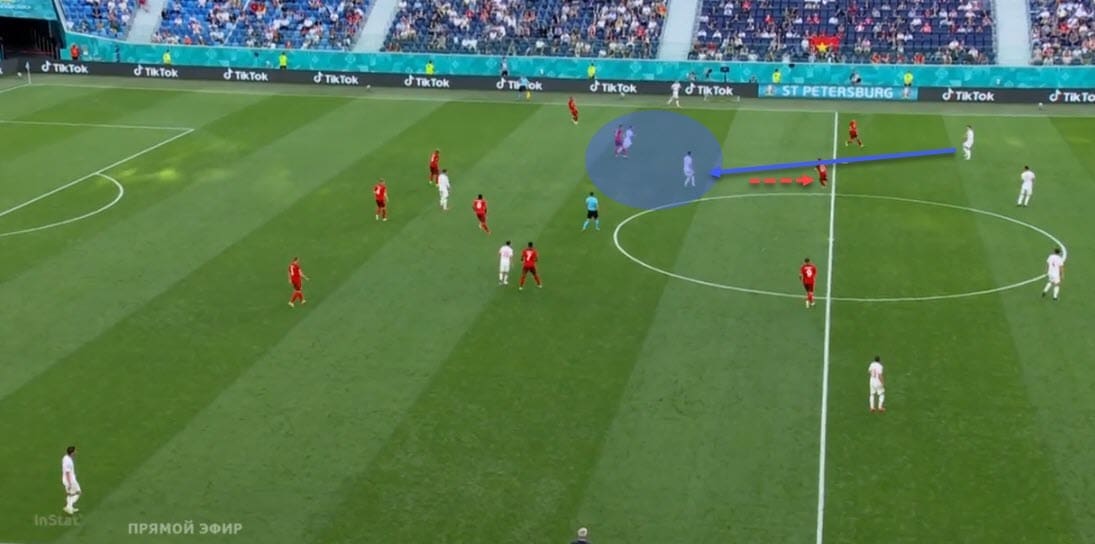
Above, Shaqiri pushes up the pitch but then leaves his teammate overloaded in a 2v1 scenario as Busquets re-adjusts his positioning to play out of the block. This was a common occurrence throughout the game and despite his heroic performance overall, Shaqiri wasn’t able to keep Busquets as quiet as he would’ve liked.
Here’s another example that shows a similar strategy. Again, Shaqiri pushes up and leaves Busquets free. This forces Remo Freuler to correct and collapse on the Barcelona man but that means he leaves Koke alone.
Of course, Pedri still had to deploy an otherworldy pass to find the Atlético Madrid man but Spain once again manipulated their opposition’s midfield line successfully.
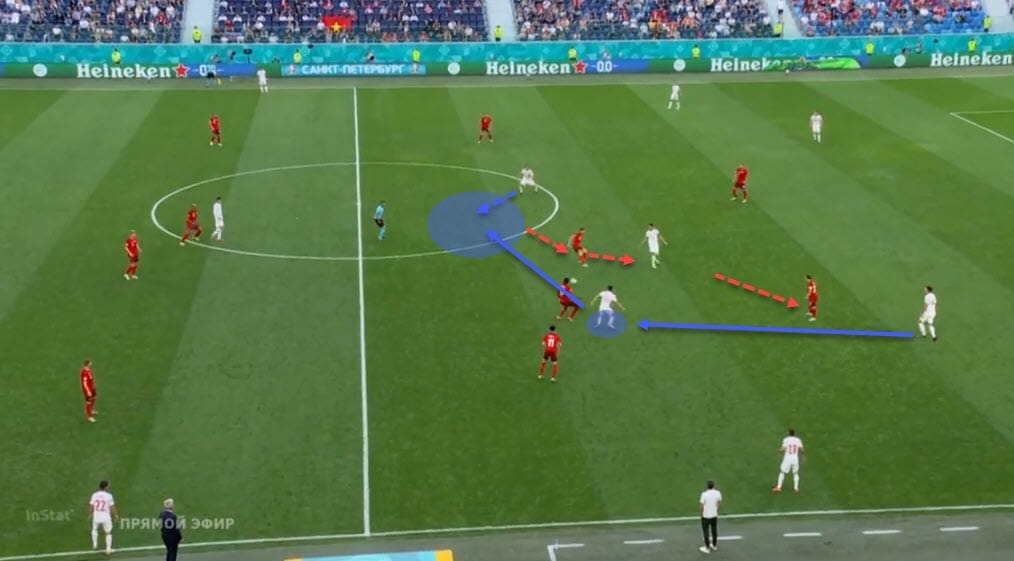
Switzerland’s defensive structure
We talked about Spain’s domination in possession but Petković didn’t wait too long to adjust his tactics, especially in the defensive phase, which we’ll discuss now in our tactical analysis. Initially, they opted for a very narrow 4-4-2 but this changed to a far more expansive and aggressive 4-2-3-1. Some of the principles remained the same.
As you can see below, despite pushing much higher up the pitch, Switzerland still put great importance on man-marking the midfielders and using the striker and second-striker to close the channel to the pivot.
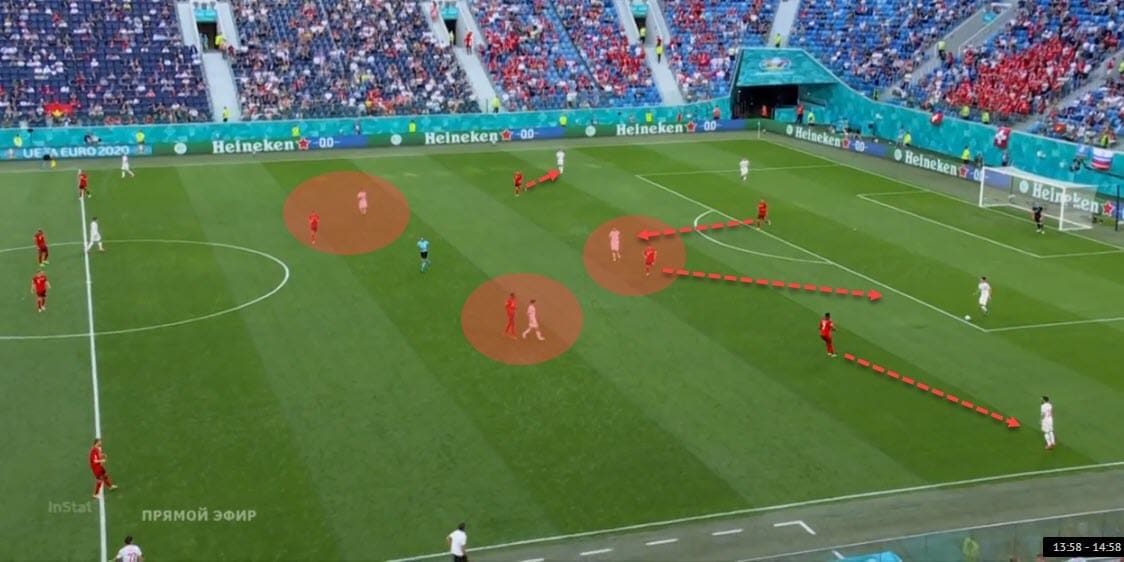
At first, this was a mixture between a purely man-marking system and a zonal one and it didn’t yield them much. The problem was that Spain still found ways to manipulate and drag their markers around the pitch as they pleased.
The wingers were very important in these sequences as they would offer an outlet to bypass the high press but would also drag and create overloads themselves. For instance, Ferrán Torres’ role was very flexible and free but his runs to break the lines were extremely valuable both on and off the ball.
Below, we can see Spain escape Switzerland’s press by using both Álvaro Morata and Torres’ movement to create and exploit the space.
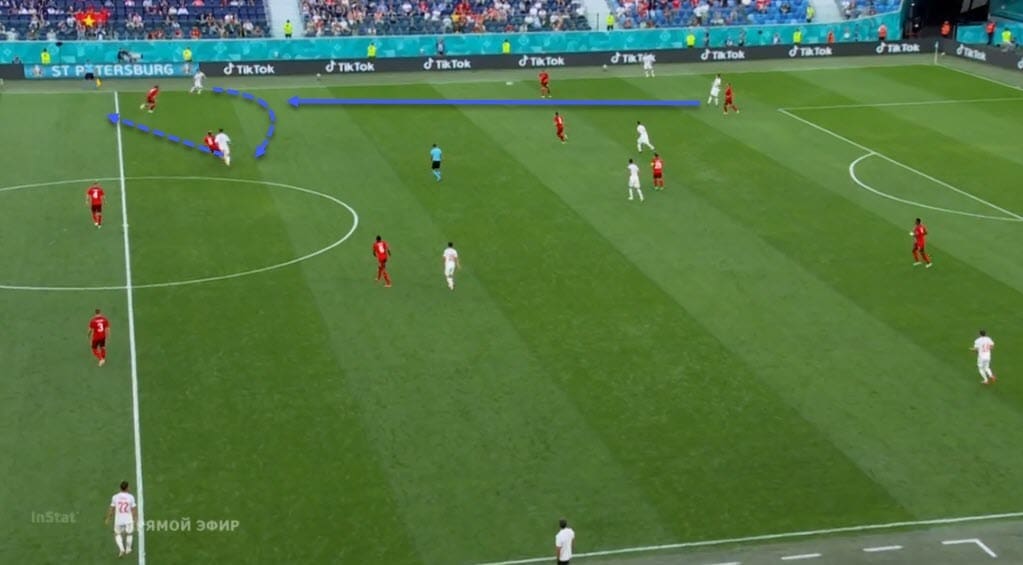
But as the game went on, the Swiss army grew stronger and more aggressive, successfully striking a balance between closing down the ball-carriers and the open channels for their opposition to exploit. The backline played a huge role in these tactics.
Notice a very similar 4-2-3-1 pressing structure below but this time, the ball is forced through the middle and towards a dropping striker since other options are unavailable. Busquets is in the cover shadow while the immediate teammates will be easily collapsed upon. This forces a risky pass towards Morata and Switzerland press effectively to stop the attack.
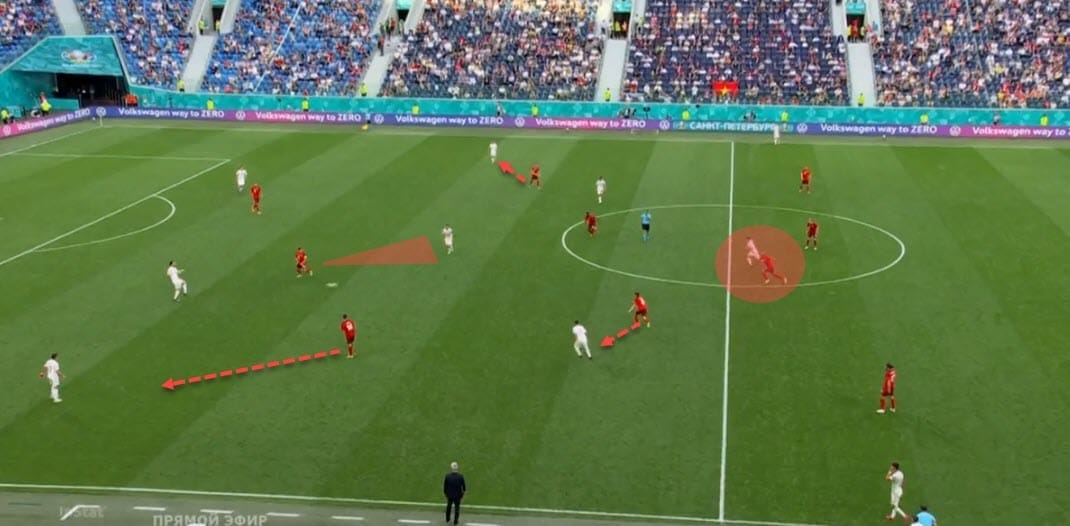
Another way they successfully nullified Spain’s approach to build-up was to force long balls. The core principles remained the same – tight marking for the midfielders and closing down close options. This means that in this example down below, Spain are forced to go fishing for Morata.
But the Juventus man is heavily outnumbered and isolated and due to the pressure from Switzerland on the ball-carrier, the pass is inaccurate. Switzerland were excellent at winning the second balls in these situations, and that proved to be an incredible weapon for their attacking and transitional tactics as well.
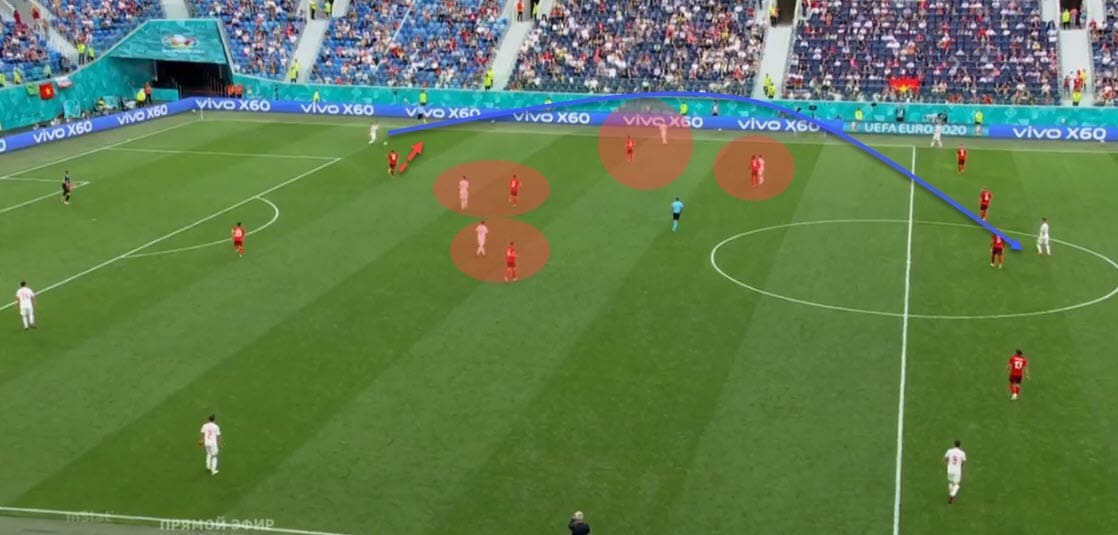
Exploiting the high line
Switzerland may not have created much from open play this game but they looked far more dangerous than Spain until extra-time kicked in. Petković opted for a far more direct style in attack, exploiting his opposition’s insistence on an extremely high defensive line.
But it was interesting to see that they always had multiple runners in almost every situation. They weren’t afraid to attack in numbers, committing to the offensive transition and making runs from deep after short sequences of play. Take the scenario below as an example.
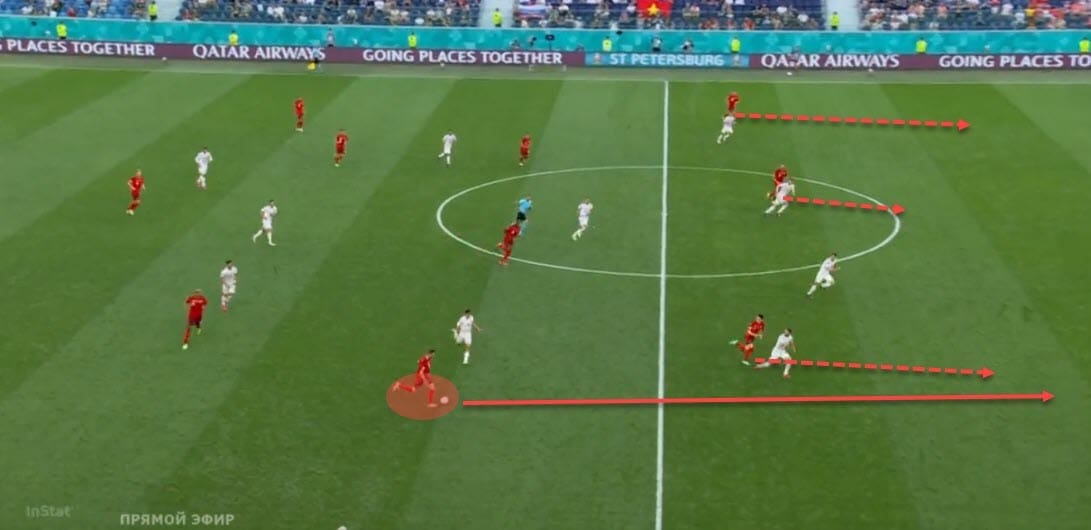
Almost immediately after a turnover, Switzerland looked to swap play to the less crowded side and then make use of their runners against Spain’s shaky backline. It has to be said that Enrique’s side are excellent at counter-pressing so playing through them wasn’t always an easy task.
However, with clear outlets and short passing options available for them, Switzerland had opportunities to counter-attack swiftly and effectively. Below, they once again get into an excellent position after just two touches, bypassing almost the entire Spain squad.
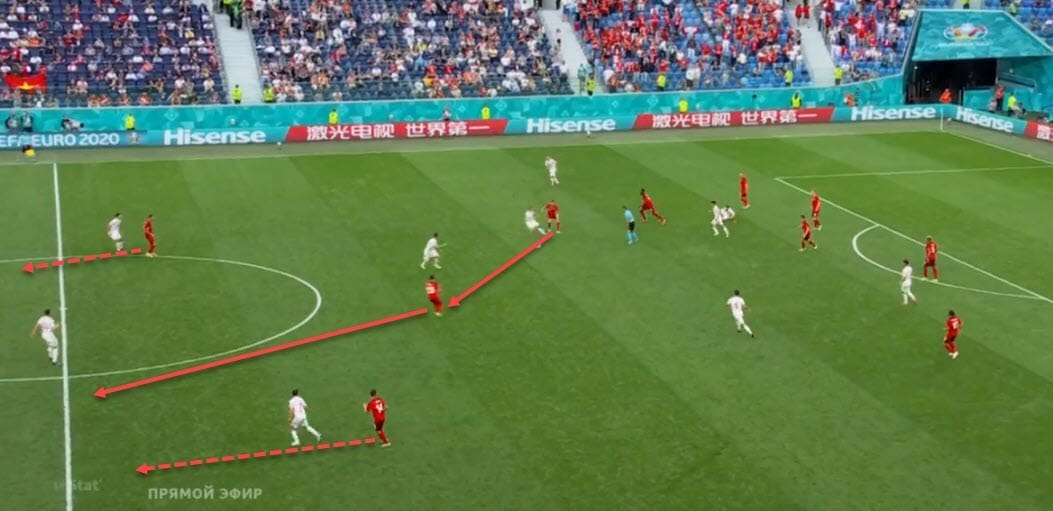
But as we mentioned earlier in this tactical analysis, it was often through going directly for their outlets and then winning the second balls that worked best in their transitional style of play. Our final example shows how a player positioned high up the pitch is used as a lay-off and then, once again, a quick combination in the middle sets up a perfect counter.
Switzerland would often opt to go long and count on winning the second balls to get into good positions to advance. Even though the sequence below looks complex, it was actually something they did really well and quite often.
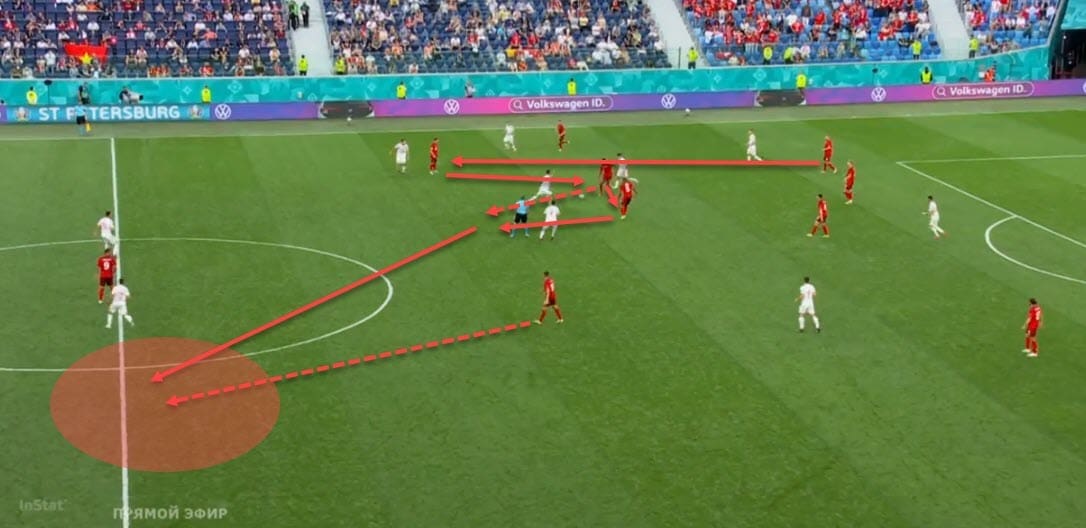
Final remarks
Spain may have advanced to the semi-finals but it was not an easy fight. And with Switzerland providing us with a blueprint to suffocate, limit and then expose this Spain side, Enrique might have to go back to the drawing board sooner rather than later.






Comments